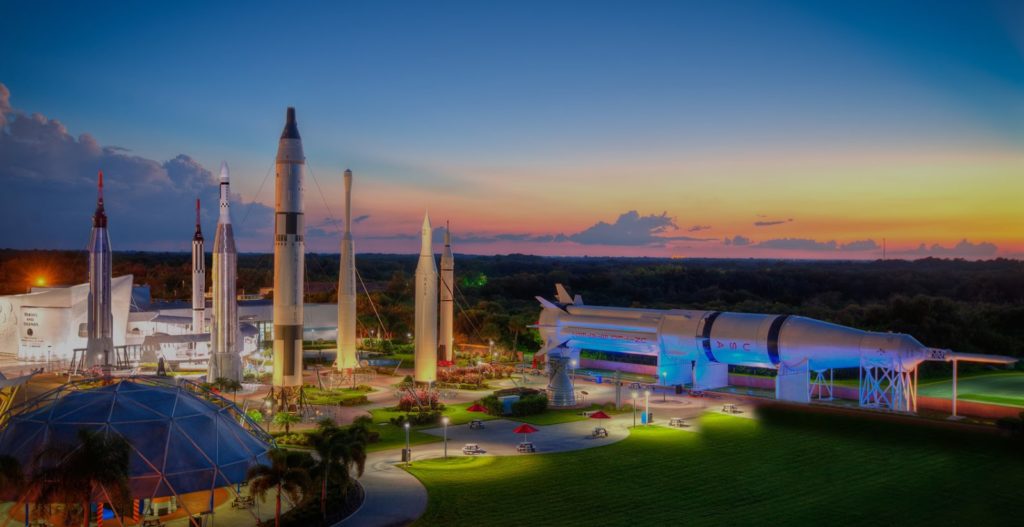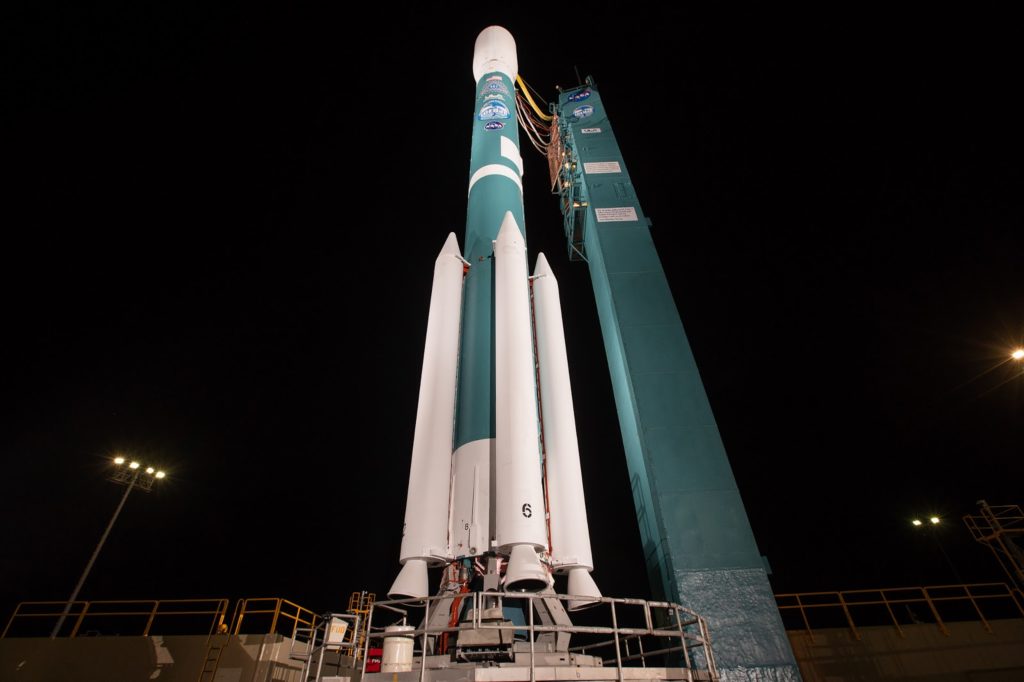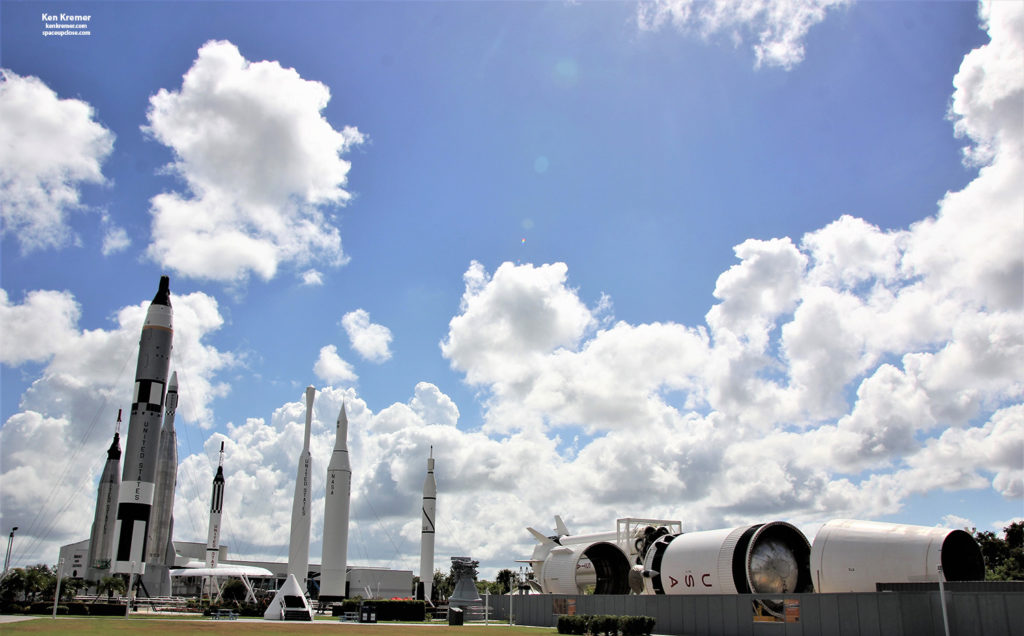— SpaceUpClose.com — 20 September 2018
FL – Rocket maker United Launch
Alliance (ULA) say the legacy of the venerable Delta II rocket will live on at the
world famous Rocket Garden – having been selected as the permanent home of the
last of the venerable Delta II rockets. Leftover components will be assembled and put on display in the “lineup
of historic rockets” for all to gaze at in wonder at NASA’s Kennedy Space
Center Visitor Complex in Florida.
from Vandenberg Air Force Base in California.
the @NASA @ExploreSpaceKSC
Visitor Complex. #DeltaII,” tweeted Tory Bruno, ULA
president and CEO.
have to say goodbye,” Bruno explained in a video released after the last
launch. “We have one more mighty Delta II rocket. I’m excited to announce that the final Delta II rocket will soon
take its place in the lineup of historic rockets located in the Rocket Garden at
NASA’s Kennedy Space Center Visitor Complex in Florida.”
The $1 Billion ICESat-2 probe lifted off atop the venerable United Launch
Alliance (ULA) Delta II’s on its 155th and final launch at 9:02 a.m. EDT Saturday, September 15, 2018.
“The
Delta II rocket has been a venerable workhorse for NASA and civilian
scientists, the U.S. military, and commercial clients throughout its almost 30
years of service,” said Tory Bruno, ULA president and
CEO, in a statement.
“This program comes to a close with the final
launch of NASA’s ICESat-2, but its legacy will
continue and the Visitor Complex will help us keep the story of the success of
this much-revered rocket in the hearts and minds of the public.”
Bruno went on to say it would be displayed “soon” and “upright”
and in the “7420-10” configuration – the same as for ICESat-2.
The
Delta II 7420-10 configuration rocket includes a 10-foot-diameter payload
fairing (PLF) and four strap-on solid rocket boosters and stands 132 feet tall (40 meters tall).
 |
|
World famous Rocket Garden at NASA’s Kennedy Space Center Visitor Complex in
Florida. Credit: Kennedy Space Center Visitor Complex |
The
Visitor Complex is of course thrilled.
“We are honored to have the Delta II
join our historic lineup of rockets in our Rocket Garden,” said Therrin
Protze, chief operating officer of the Kennedy Space Center Visitor Complex.
“We are excited to welcome the ULA #DeltaII rocket to our Rocket Garden! Welcome Delta II and thank
you @ULALaunch and @ToryBruno!” tweeted
the visitor center.
“The maiden Delta II took flight on Valentine’s Day in 1989, successfully delivering
the first operational GPS satellite into space,” noted ULA.
“Since
that first launch, Delta II rockets have launched 154 successful missions. Its
resume includes several trips to Mars as well as the planet-hunting Kepler, the
twin lunar-orbiting GRAIL spacecraft, 48 GPS satellites and numerous commercial
imaging and communications satellites.”
in American Space History and truly harkens back to the Dawn of the Space Age
by launching research probes that’s contributed so much to human knowledge and
others like the Global Positioning Satellites (GPS), weather and communications
satellites that benefit virtually every human on Earth every moment of every
day and military satellites that make vital contributions to US National
Defense.
Among the NASA science missions
launched are the famous twin Mars Exploration Rovers Spirit and Opportunity,
Pathfinder, Dawn Asteroid Orbiter, MESSENGER Mercury Orbiter, Mars Phoenix,
Mars Odyssey, Mars Global Surveryor, Deep Impact, Spitzer Space Telescope,
Kepler, NEAR, STEREO, WMAP and many many more.
from Space Launch Complex-17 on Cape Canaveral Air Force Station and delivered
NASA’s twin LADEE lunar probes to the Moon – attended by this author.
as I witnessed and reported – http://kenkremer.blogspot.com/2018/07/dual-launch-towers-at-cape-canaveral.html
Thus its wonderful to learn that the Delta II will live on
forever at KSCVC !
Watch for Ken’s continuing onsite coverage of NASA, SpaceX, ULA,
Boeing, Lockheed Martin, Northrup Grumman (Orbital ATK) and more space and
mission reports direct from the Kennedy Space Center, Cape Canaveral Air Force
Station, Florida and Wallops Flight Facility, Virginia.
Stay tuned here for Ken’s continuing Earth and Planetary science and human
spaceflight news: www.kenkremer.com
–www.spaceupclose.com – twitter @ken_kremer – email: ken at kenkremer.com
Dr. Kremer is a research scientist and journalist based in the
KSC area.
………….
Ken’s photos are for sale and he is available for lectures and outreach events







